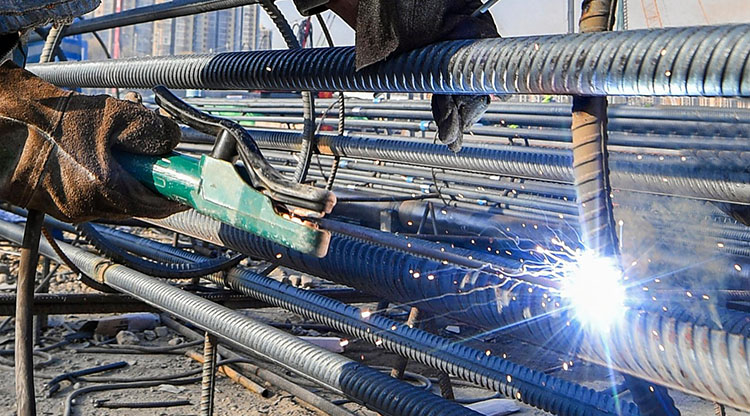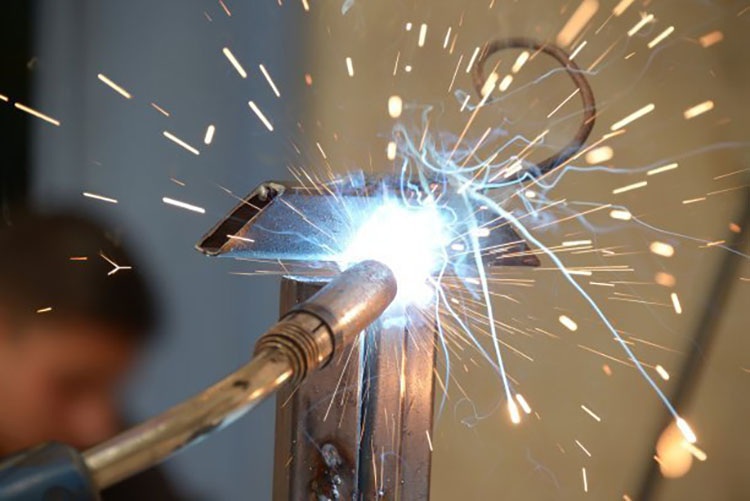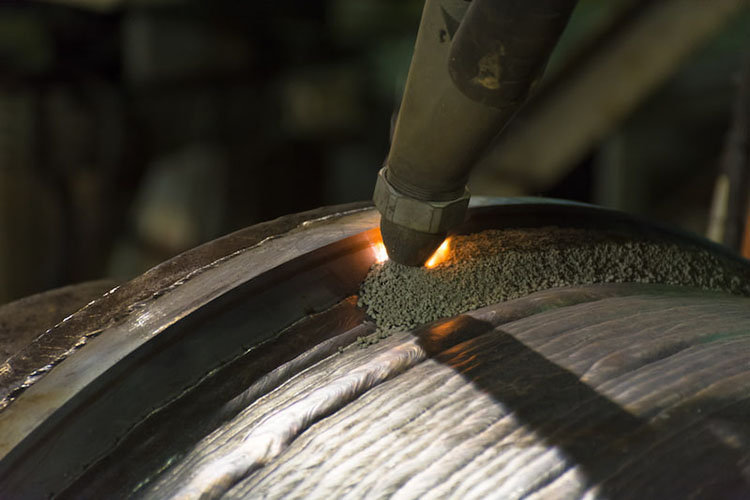Welding can use AC or DC welding machine. When using a DC welding machine, there are positive connection and reverse connection. Factors such as the electrode used, the condition of the construction equipment, and the welding quality should be considered.
Compared with AC power supply, DC power supply can provide stable arc and smooth droplet transfer. – Once the arc is ignited, the DC arc can maintain continuous combustion.
When using AC power welding, due to the change of current and voltage direction, and the arc needs to be extinguished and re-ignited 120 times per second, the arc cannot burn continuously and stably.
In the case of low welding current, the DC arc has a good wetting effect on the molten weld metal and can regulate the size of the weld bead, so it is very suitable for welding thin parts. DC power is more suitable for overhead and vertical welding than AC power because the DC arc is shorter.
But sometimes the arc blowing of DC power supply is a prominent problem, and the solution is to convert to AC power supply. For AC and DC dual-purpose electrodes designed for AC or DC power welding, most welding applications work better under DC power conditions.
(1) Ordinary structural steel welding
For ordinary structural steel electrodes and acid electrodes, both AC and DC can be used. When using a DC welding machine to weld thin plates, it is better to use DC reverse connection.
Generally, direct current connection can be used for thick plate welding to obtain greater penetration. Of course, reverse direct current connection is also possible, but for backing welding of thick plates with grooves, it is still better to use direct current reverse connection.
Basic electrodes generally use DC reverse connection, which can reduce porosity and spatter.
(2) Molten argon arc welding (MIG welding)
Metal arc welding generally uses DC reverse connection, which not only stabilizes the arc, but also removes the oxide film on the surface of the weldment when welding aluminum.
(3) Tungsten argon arc welding (TIG welding)
Tungsten argon arc welding of steel parts, nickel and its alloys, copper and its alloys, copper and its alloys can only be connected with direct current. The reason is that if the DC connection is reversed and the tungsten electrode is connected to the positive electrode, the temperature of the positive electrode will be high, the heat will be more, and the tungsten electrode will melt quickly.
Extremely fast melting, unable to make the arc burn stably for a long time, and the molten tungsten falling into the molten pool will cause tungsten inclusion and reduce the quality of the weld.
(4)CO2 gas shielded welding (MAG welding)
In order to keep the arc stable, the excellent weld shape , and reduce spatter, CO2 gas shielded welding generally uses DC reverse connection .However, in surfacing welding and repair welding of cast iron, it is necessary to increase the metal deposition rate and reduce the heating of the workpiece, and DC positive connection is often used.
The stainless steel electrode is preferably DC reversed. If you do not have a DC welding machine and the quality requirements are not too high, you can use the Chin-Ca type electrode to weld with an AC welding machine.
(6) Repair welding of cast iron
The repair welding of cast iron parts generally adopts the DC reverse connection method. During welding, the arc is stable, the spatter is small, and the penetration depth is shallow, which just meets the requirements of low dilution rate for cast iron repair welding to reduce crack formation.
(7) Submerged arc automatic weld
Submerged arc automatic welding can be welded with AC or DC power supply. It is selected according to product welding requirements and flux type. If nickel-manganese low-silicon flux is used, DC power supply welding must be used to ensure the stability of the arc to obtain greater penetration.
(8) Comparison between AC welding and DC welding
Compared with AC power supply, DC power supply can provide stable arc and smooth droplet transfer. – Once the arc is ignited, the DC arc can maintain continuous combustion.
When using AC power welding, due to the change of current and voltage direction, and the arc needs to be extinguished and re-ignited 120 times per second, the arc cannot burn continuously and stably.
In the case of low welding current, the DC arc has a good wetting effect on the molten weld metal and can regulate the size of the weld bead, so it is very suitable for welding thin parts. DC power is more suitable for overhead and vertical welding than AC power because the DC arc is shorter.
But sometimes the arc blowing of DC power supply is a prominent problem, and the solution is to convert to AC power supply. For AC and DC dual-purpose electrodes designed for AC or DC power welding, most welding applications work better under DC power conditions.
In manual arc welding, AC welding machines and some additional devices are cheap, and can avoid the harmful effects of arc blowing force as much as possible. But in addition to lower equipment costs, welding with AC power is not as effective as DC power.
Arc welding power sources (CC) with steep drop-off characteristics are best suited for manual arc welding. The change in voltage corresponding to the change in current shows a gradual decrease in current as the arc length increases. This characteristic limits the maximum arc current even if the welder controls the size of the molten pool.
Constant changes in arc length are unavoidable as the welder moves the electrode along the weldment, and the dipping characteristic of the arc welding power source ensures arc stability during these changes.
Post time: May-25-2023



